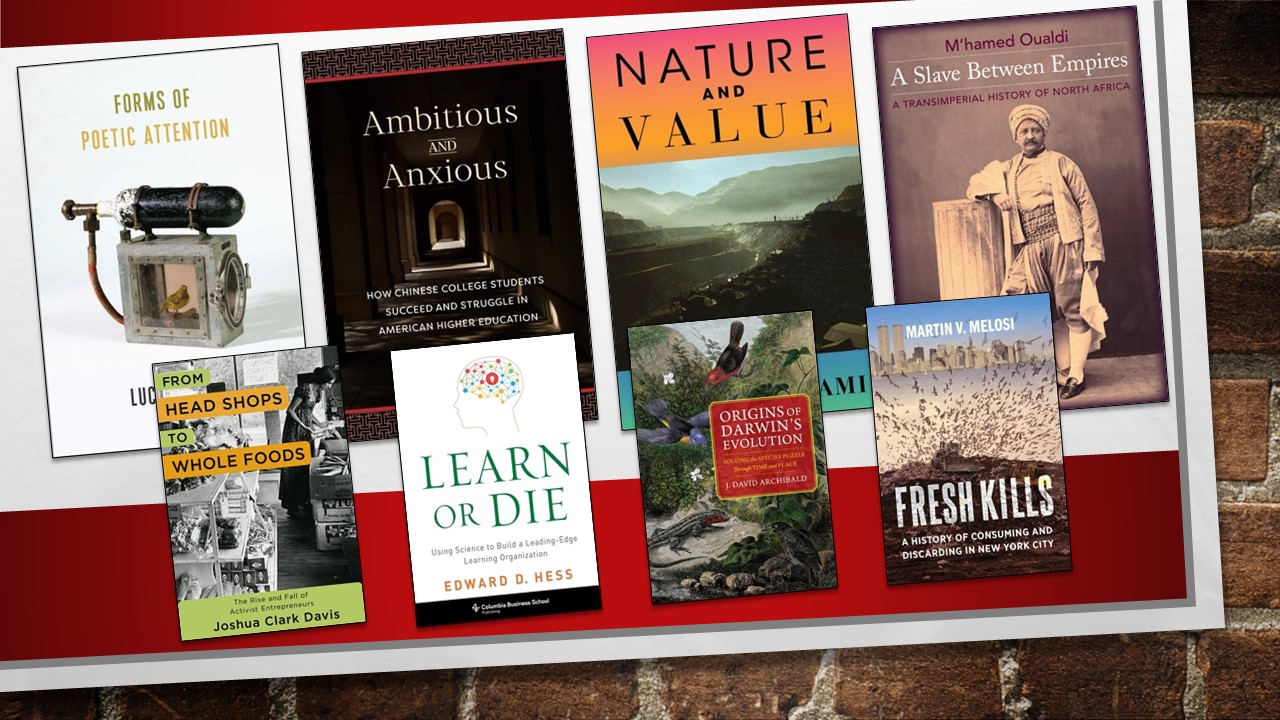Q&A: M’hamed Oualdi on A Slave Between Empires

“M’hamed Oualdi’s biography cum social history is dazzling. In life and death, General Husayn Ibn ‘Abdallah’s story reveals unlikely itineraries, unsuspected traveling companions, and hidden transactions that call into question conventional histories of nineteenth-century North Africa and the Ottoman Empire. The author’s presentation of archives as exiles, émigrés, and migrants is particularly original.”
~Julia Clancy-Smith, author of Mediterraneans: North Africa and Europe in an Age of Migration, c. 1800–1900
Our MESA virtual exhibit continues today with a Q&A between M’hamed Oualdi, author of A Slave Between Empires: A Transimperial History of North Africa, which received an honorable mention for the 2020 Nikki Keddie Book Award from the Middle East Studies Association, and Caelyn Cobb, editor of Middle East history and politics.
• • • • • •
Caelyn Cobb: You employ a microhistorical approach in this book, following the story of an Ottoman slave who worked his way up to become a general as a window into imperial history in North Africa. How did you come to learn about General Husayn? Why did you select his story as a way into this period of history?
M’hamed Oualdi: General Husayn’s case came to light in all its richness and complexity while I was exploring the lives of specific servants to the governors of Ottoman Tunis between the seventeenth and late nineteenth centuries for my first book, which was published in French by the Sorbonne University Press. The mamluks (the “owned people” in Arabic) that I studied were servants of the Ottoman governors of Tunisia. They were mostly slaves from Caucasia. Some were, as well, Italian and Greek captives who had converted to Islam, while others were freeborn Muslims from the province of Tunis. Mamluks had roles as diverse as their origins, from cook to general, gardener to prime minister.
Among the last generation of mamluks, straddling the era of Ottoman reforms and the early days of French colonization in Algeria and Tunisia, from the 1830s to the 1880s, the individual whose trajectory struck me as the most intriguing was without a doubt General Husayn Ibn ‘Abdallah (late 1820s–1887). Unlike other mamluk dignitaries from Tunis, Husayn did not die in Tunisia or any other part of the empire still under Ottoman tutelage, such as Cairo or Istanbul. When Husayn passed away in 1887, six years after the establishment of the French protectorate over Tunisia, he was living in Florence, having represented the interests of the Tunisian state in various financial disputes in Tuscany since the 1870s. While we know very little about the estates of many Tunisian dignitaries, there are exhaustive primary sources about the disputes that sprang up around General Husayn’s estate in Tuscany from 1887 to the early 1890s.
The book explores precisely Husayn Ibn ‘Abdallah’s life and the disputes over his estate to advocate for an entangled history of the Maghreb written not only by European colonial powers but also by provincial Ottoman people who lived across the Mediterranean including in Europe.
CC: You have sources in several languages and countries across the former Ottoman Empire and in Europe. What was your archival research process like?
MO: In the case of Husayn, while I was working on my previous project about the Tunisian mamluks, I had the chance to find fascinating sources in Arabic such as the administrative file of Husayn at the Tunisian National Archives, as well as the letters that Husayn sent from the 1860s to 1887 to his friend and colleague Khayr al-Din, another famous Circassian mamluk in Tunisian, that have been published in the 1990s in two volumes.
From there, my goal was to explore various European archives to find any other document related to the life of Husayn and the many legal disputes around his estate involving North African Muslim and Jews, Italian lawyers, French authorities, and Ottoman subjects … Here, again, I had the chance to start my investigation a decade ago in the city where Husayn passed away, precisely in Florence where I was for one year a postdoctoral fellow at the European University Institute. In the following years, I expanded my investigation to Rome, Paris, Nantes, London, and Washington. A colleague, Youssef Ben Ismail, was kind enough to send me specific files about Husayn that he found in the Ottoman archives in Istanbul.
Interestingly, from this experience as well as for my current project about slave testimonies funded by a European research council grant, I learned that writing a transimperial and transregional history of modern Africa often means gathering scattered fragments in various languages, not only in Tunis, for instance, but also across Europe and in Istanbul. In this sense, one of the main goal of this book is to show that the colonial archives, despite being the basis for studies of the modern Maghreb, were not only manipulated and rearranged for political ends; they also blind us to the sheer profusion of writing in nineteenth-century North African societies. Husayn’s case makes it clear that these societies— just like Europe at the time—produced a prodigious volume of documents in various languages that we crucially need to recover and explore.
CC: You refer to this as a “transimperial” history. What new things can we learn from looking at history this way?
MO: By “transimperial” history, and more precisely a “transimperial” history of North Africa, I mean a history that will take into account the various imperial rules that overlapped in this region: not only the French colonial violent domination, which has been at the center of most of the historical studies about North Africa, but also, and at the same time, the Ottoman imperial influence and its many legacies that were still shaping some North African social milieus until the 1930s.
Because of the traumatic violence that French colonization has inflicted upon Algerians since the 1830s, and then upon Tunisia and Moroccans, historians of North Africa have primarily and rightly concentrated their studies on such colonial shock. However, I argue that historians must transcend any vision of a modern history of the Maghreb perceived solely through the prism of European colonization and mainly through European colonial sources. In the book, I argue that we can also aim for a reinterpretation of the modern period, and of colonialism itself, based on a careful study of what preceded and overlapped with European colonialism in North Africa from the 1880s until the 1920s—namely, the Ottoman provincial culture developed on the southern shores of the Mediterranean for more than three centuries, beginning in the second half of the sixteenth century.
In reassessing the Ottomanness of the Maghreb, this book does not cultivate any nostalgia at all for this Islamic empire. Rather it takes into account recent questions that historians such as Zeynep Çelik, Ussama Makdisi, and Selim Deringil have raised about the colonial dimension of the late Ottoman Empire in the second half of the nineteenth century. It applies to North Africa a line of inquiry about the lasting effects of the Ottoman legacy that has already led to a reassessment of the history of the Levant. It shows in concrete terms how the effects of having belonged to the Ottoman Empire persisted into the late modern period, during the early days of French colonization in Tunisia.






